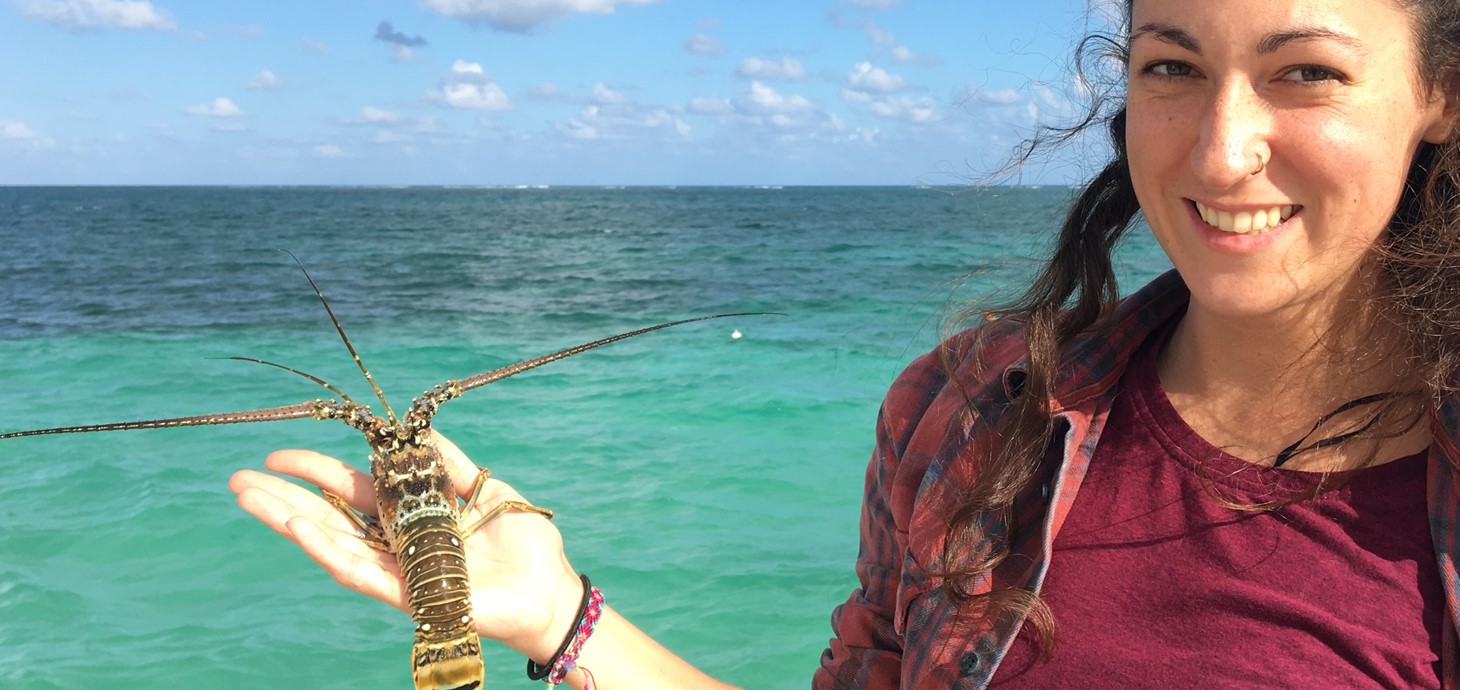These articles are now archived and will no longer be updated.

Researcher Dr Charlotte Eve Davies about to release a lobster from the study sample back into the ocean
Levels of virus infection in lobsters seem to be related to habitat and other species, new studies of Caribbean marine protected areas have shown.
The findings will support efforts to safeguard Caribbean spiny lobsters, which are a vital food source for communities across the region and world. They also boost our understanding of how viruses spread – disease dynamics - and of the ecology of fragile environments such as tropical reef lagoons and seagrass ecosystems.
The spiny lobster, which has the scientific name Panulirus argus, is found across the Caribbean. Coastal habitats such as seagrass meadows and beds of algae act as nurseries for the juveniles before they move to the coral reefs when they are fully grown.
The research, led by Dr Charlotte Davies, now of Swansea University, took place with colleagues at the National Autonomous University of Mexico’s Reef Systems Unit. They focused on a threat to this species called Panulirus argus virus 1 (PaV1). Discovered in 2000, PaV1 is the first known naturally occurring virus in lobsters.
The virus is a particular threat to juvenile lobsters, so tackling it is vital in protecting the species.
The team examined lobsters in two marine protected areas in the Mexican Caribbean: the Sian Ka'an Biosphere Reserve and the National Reef Park of Puerto Morelos, where the virus has been present since 2001.
They carried out the systematic assessment of virus prevalence across both sites, once a year for two years in Sian Ka’an and seasonally over 4 years in Puerto Morelos. Each site was separated into zones with differing features such as water depth, sediment and extent of vegetation.
Previous research had suggested that virus prevalence may have a correlation with habitat, so investigating this in more detail was at the heart of the research, as well as looking at biodiversity of surrounding invertebrate (lobster food) communities.
The team found:
- The rate of infection overall was highest amongst smaller juvenile lobsters, confirming findings from previous studies, and true prevalence could be as high as 32% across populations
- In Sian Ka’an, they found that significantly more lobsters with PaV1 lived in the highly vegetated seagrass meadows, compared to the coral reefs – indicating that there may be something in the seagrass which is preventing the virus spreading. Recent research elsewhere has shown that coastal seagrass meadows can trap some pathogens, greatly reducing the number that reach the open ocean and benefiting humans and marine life.
- However, in Puerto Morelos, where the lobsters are smaller and the ecosystem is very different, variations in habitat in the lagoon did not significantly influence the prevalence of the virus, showing that results may be site-specific
Dr Charlotte Eve Davies of Swansea University, lead researcher on the project, said:
“What influences the spread of a virus? Our question was whether habitat or food species play a role, in relation to Caribbean spiny lobsters.
Our studies showed that the overall habitat - physical surroundings and other species – can significantly influence the prevalence of this virus depending on the location and ecosystem.
Our findings can help safeguard this important food resource for Caribbean communities. They also increase our understanding of this virus and give us a better picture of the wider ecosystem in this fragile environment."
